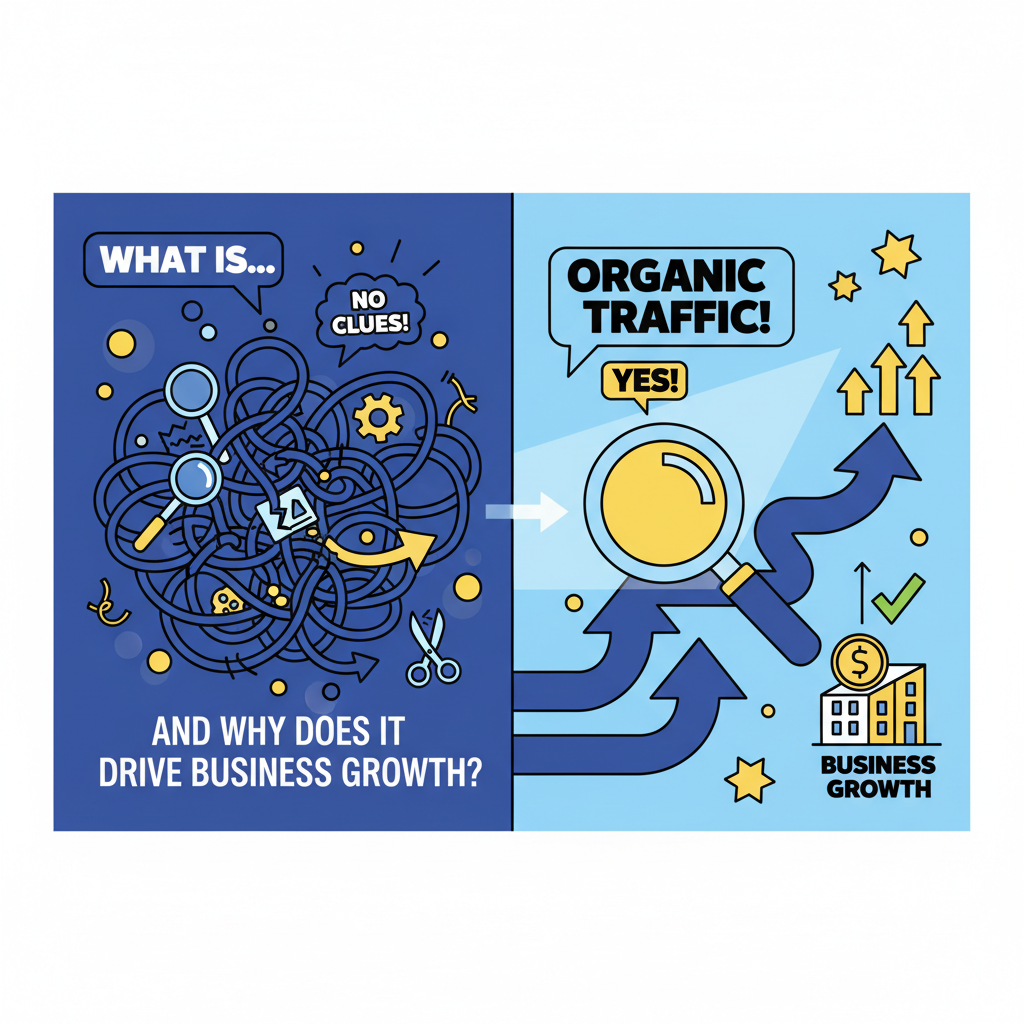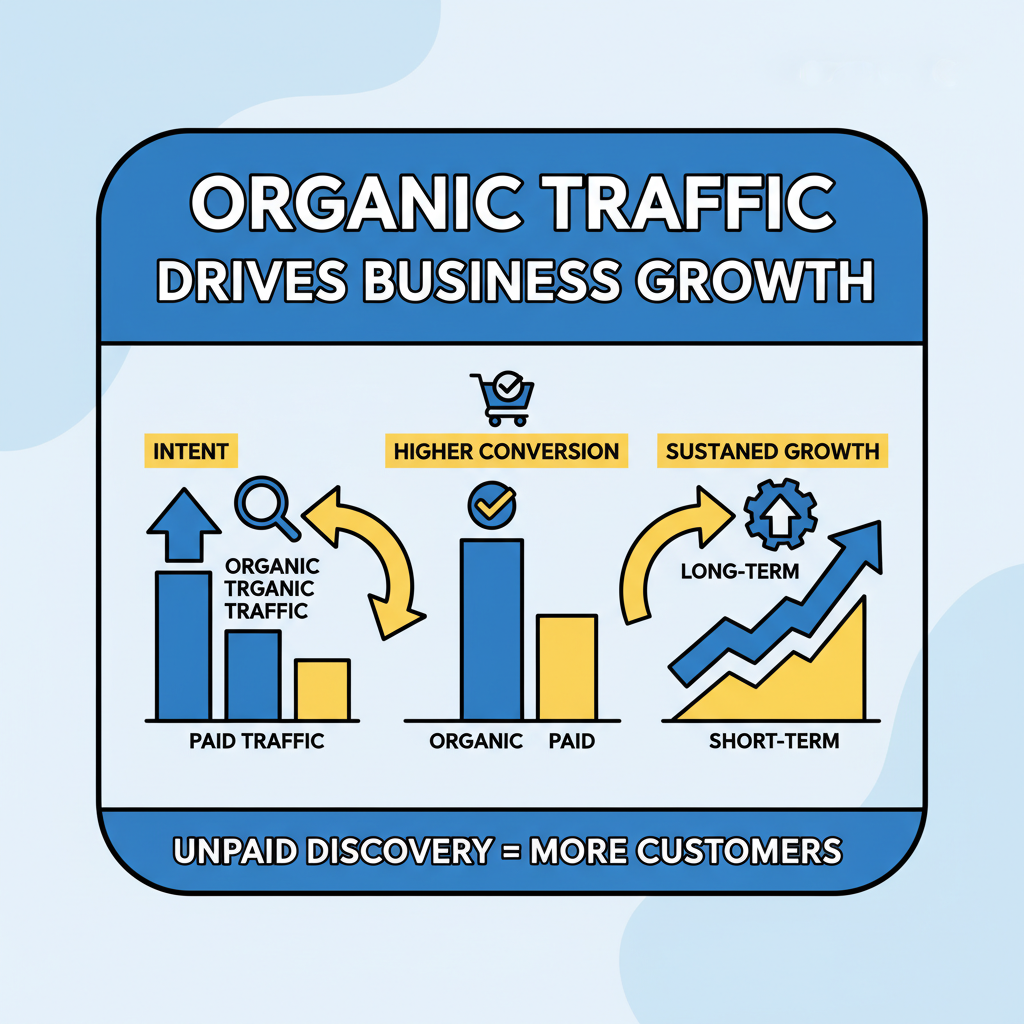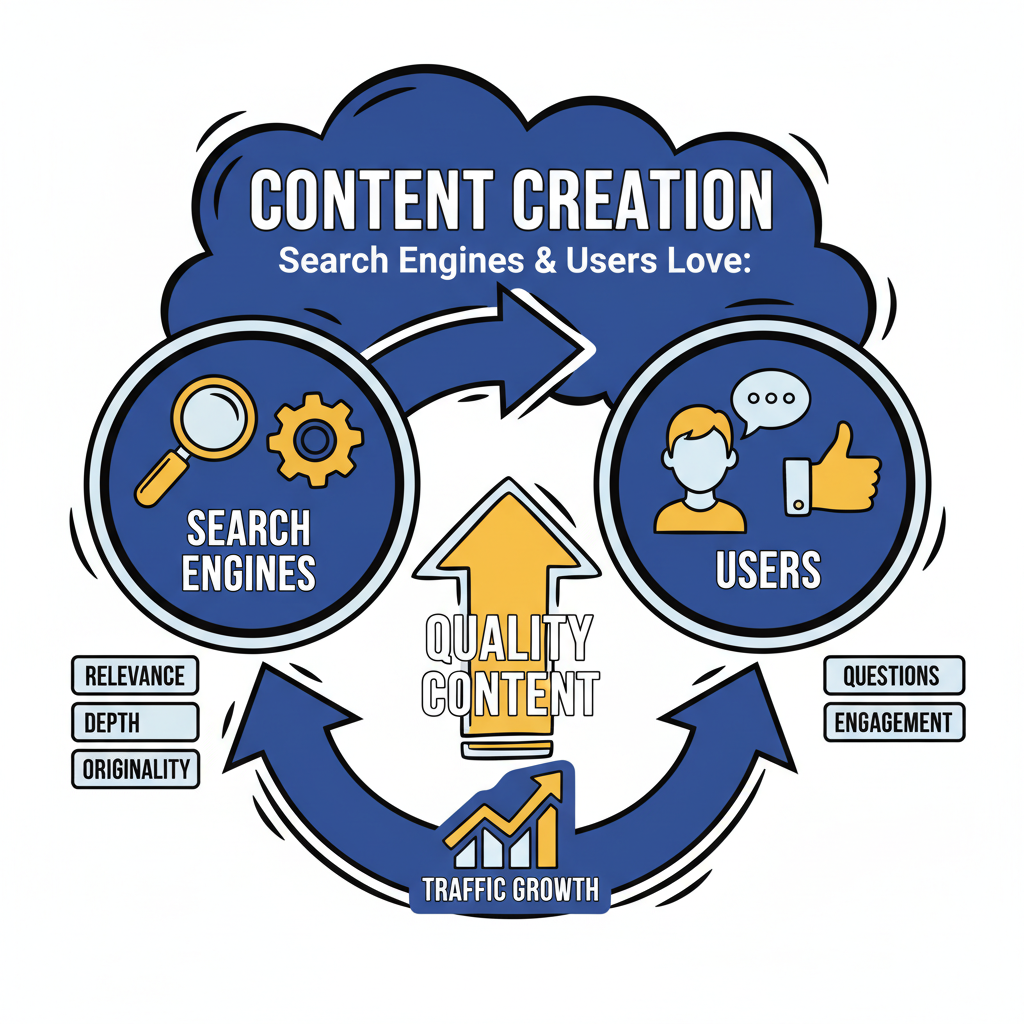What is Organic Traffic and Why Does It Drive Business Growth?
Posted by
How to Build Sustainable Organic Traffic: Complete Guide for 2025

Building sustainable organic traffic requires more than just basic SEO tactics. In 2025, search engines have become increasingly sophisticated, rewarding websites that demonstrate genuine value and expertise. This comprehensive guide will walk you through proven strategies to attract high-quality visitors who find your content through search engines naturally, without paid advertising.
What is Organic Traffic and Why Does It Drive Business Growth?

Organic traffic represents visitors who discover your website through unpaid search engine results. Unlike paid advertising, these visitors actively search for information, products, or services related to your business. This intent-driven traffic typically converts better because users are already interested in what you offer.
The value of organic traffic extends beyond immediate conversions. Search engines view consistent organic growth as a signal of content quality and user satisfaction. This creates a positive feedback loop where better rankings lead to more visibility, which generates more traffic and further improves your search engine authority.
Understanding the mechanics of organic traffic helps you make strategic decisions about content creation and website optimization. When users type queries into search engines, algorithms evaluate thousands of factors to determine which pages best answer their questions. Your goal is to create content that search engines recognize as the most relevant and valuable result for specific queries.
How Do You Conduct Strategic Keyword Research for Maximum Impact?
Strategic keyword research forms the foundation of successful organic traffic generation. Start by identifying your target audience's search behavior patterns. Use tools like Google Keyword Planner, Ahrefs, or SEMrush to discover what terms people actually use when looking for solutions you provide.
Focus on long-tail keywords that indicate strong purchase intent or specific information needs. For example, instead of targeting the broad term "shoes," consider "waterproof hiking boots for women" or "best running shoes for flat feet." These specific phrases typically have less competition and attract visitors who know exactly what they want.
Analyze your competitors' keyword strategies to identify gaps and opportunities. Look for keywords where competitors rank well but haven't fully optimized their content. This approach, combined with comprehensive keyword research strategies, helps you discover untapped traffic sources that can drive qualified visitors to your website.
What Makes Keyword Intent Classification Essential?
Understanding search intent behind keywords determines your content strategy success. Search intent falls into four main categories:
- Informational: Users seeking knowledge or answers - Navigational: Users looking for specific websites or pages - Transactional: Users ready to make purchases or take action - Commercial Investigation: Users comparing options before buying
Match your content type to search intent. Informational queries require comprehensive guides or tutorials, while transactional keywords need product pages or service descriptions with clear calls-to-action.
How Do You Create Content That Search Engines and Users Love?

Content quality directly impacts your ability to attract and retain organic traffic. Search engines evaluate content based on relevance, depth, originality, and user engagement signals. Create comprehensive resources that thoroughly address user questions and provide actionable solutions.
Structure your content with clear headings, bullet points, and logical flow. Use the inverted pyramid approach, presenting the most important information first, followed by supporting details and examples. This structure helps both users and search engines understand your content hierarchy and main topics.
Optimize content length based on topic complexity and user needs. While there's no magic word count, comprehensive topics typically require 1,500-3,000 words to cover adequately. However, prioritize value over length. A concise, highly relevant 800-word article often outperforms a lengthy piece filled with fluff.
| Content Type | Ideal Length | Primary Purpose | SEO Focus |
|---|---|---|---|
| Blog Posts | 1,500-2,500 words | Education/Information | Long-tail keywords |
| Product Pages | 300-800 words | Conversion | Commercial keywords |
| Landing Pages | 500-1,200 words | Lead Generation | High-intent keywords |
| Guides/Tutorials | 2,000-4,000 words | Comprehensive Education | Topic clusters |
What Technical Elements Accelerate Organic Traffic Growth?
Technical optimization ensures search engines can efficiently crawl, index, and rank your content. Page loading speed significantly impacts both user experience and search rankings. According to Google's Core Web Vitals, pages should load within 2.5 seconds for optimal performance.
Mobile responsiveness has become non-negotiable as mobile searches now account for over 60% of all queries. Ensure your website displays correctly across all device types and screen sizes. Google's mobile-first indexing means the mobile version of your site primarily determines your search rankings.
Implement proper URL structure using descriptive, keyword-rich slugs. Clean URLs help both users and search engines understand page content. For example, "/organic-traffic-guide-2025" is more effective than "/page-id-12345" or "/category/post/article."
How Does Website Analysis Improve Organic Performance?
Regular website analysis identifies opportunities and problems that impact organic traffic growth. Monitor key metrics including organic click-through rates, average session duration, and pages per session. These engagement signals influence how search engines evaluate your content quality.
Use tools like Google Analytics and Google Search Console to track organic traffic patterns. Identify which pages generate the most traffic and which keywords drive the highest-converting visitors. This data guides future content creation and optimization efforts. For deeper insights into performance monitoring, explore comprehensive website analysis techniques that reveal hidden optimization opportunities.
How Do You Build Authority Through Strategic Link Building?

Link building remains a crucial factor in organic traffic growth, but the approach has evolved significantly. Focus on earning links through valuable content rather than manipulative tactics. High-quality backlinks from relevant websites signal to search engines that your content deserves higher rankings.
Create linkable assets such as original research, comprehensive guides, tools, or industry reports. These resources naturally attract links from other websites seeking to reference authoritative information. Reach out to industry publications, bloggers, and website owners who might find your content valuable for their audiences.
Internal linking helps distribute page authority throughout your website while improving user navigation. Link related pages using descriptive anchor text that indicates what visitors will find. This strategy keeps users engaged longer and helps search engines understand your site structure and content relationships.
What Role Does Fast SEO Implementation Play in Traffic Growth?
Speed of implementation often determines SEO success in competitive markets. Fast SEO strategies focus on high-impact optimizations that deliver results quickly while building long-term organic growth foundations.
Prioritize quick wins such as optimizing title tags, meta descriptions, and header structures. These changes can improve click-through rates and rankings within weeks. Simultaneously, work on longer-term strategies like content creation and link building that compound over time.
Monitor your organic traffic growth using tools like Google Analytics and Search Console. Track keyword rankings, organic sessions, and conversion rates to measure progress. According to Moz's ranking factors study, consistent optimization efforts typically show measurable results within 3-6 months.
How Do You Scale Organic Traffic Growth Systematically?
Systematic scaling requires documented processes and consistent execution. Develop content calendars that align with seasonal trends, industry events, and keyword opportunities. Plan content clusters around main topics to establish topical authority in your niche.
Implement automated SEO tools where appropriate to streamline repetitive tasks. However, maintain human oversight for strategic decisions and content quality. The goal is to increase efficiency without sacrificing the personalized approach that makes content valuable.
Track performance metrics regularly and adjust strategies based on data. What works for one website may not work for another, so continuous testing and optimization are essential. Focus on sustainable growth tactics that build long-term value rather than short-term ranking manipulation.
Conclusion
Building sustainable organic traffic requires a comprehensive approach combining strategic keyword research, high-quality content creation, technical optimization, and systematic execution. The strategies outlined in this guide provide a roadmap for attracting qualified visitors who discover your website through search engines naturally.
Success in organic traffic generation comes from consistent effort and continuous improvement. Start with the fundamentals of keyword research and content optimization, then gradually implement more advanced techniques as you gain experience and see results.
Ready to accelerate your organic traffic growth? Fast SEO Fix specializes in implementing these proven strategies quickly and effectively. Our systematic approach helps businesses achieve measurable organic traffic increases while building long-term search engine authority.